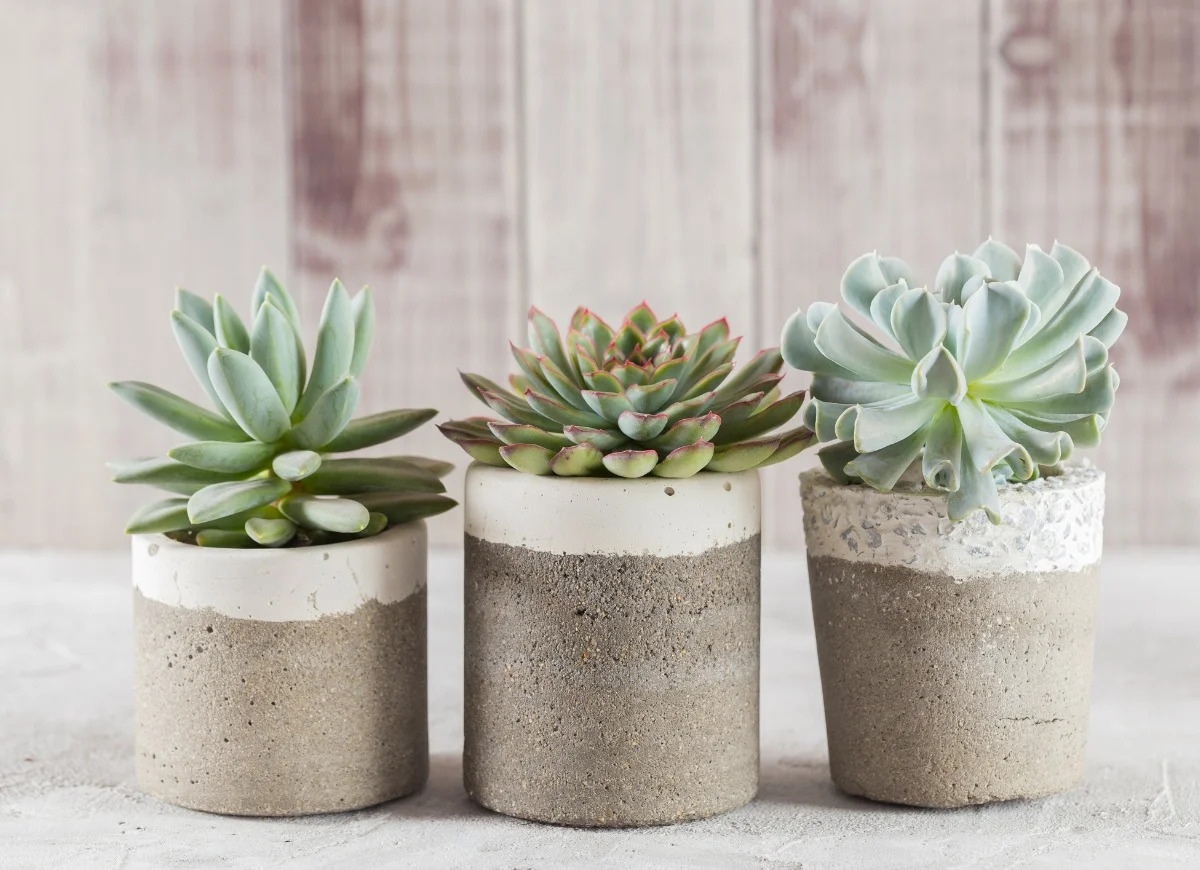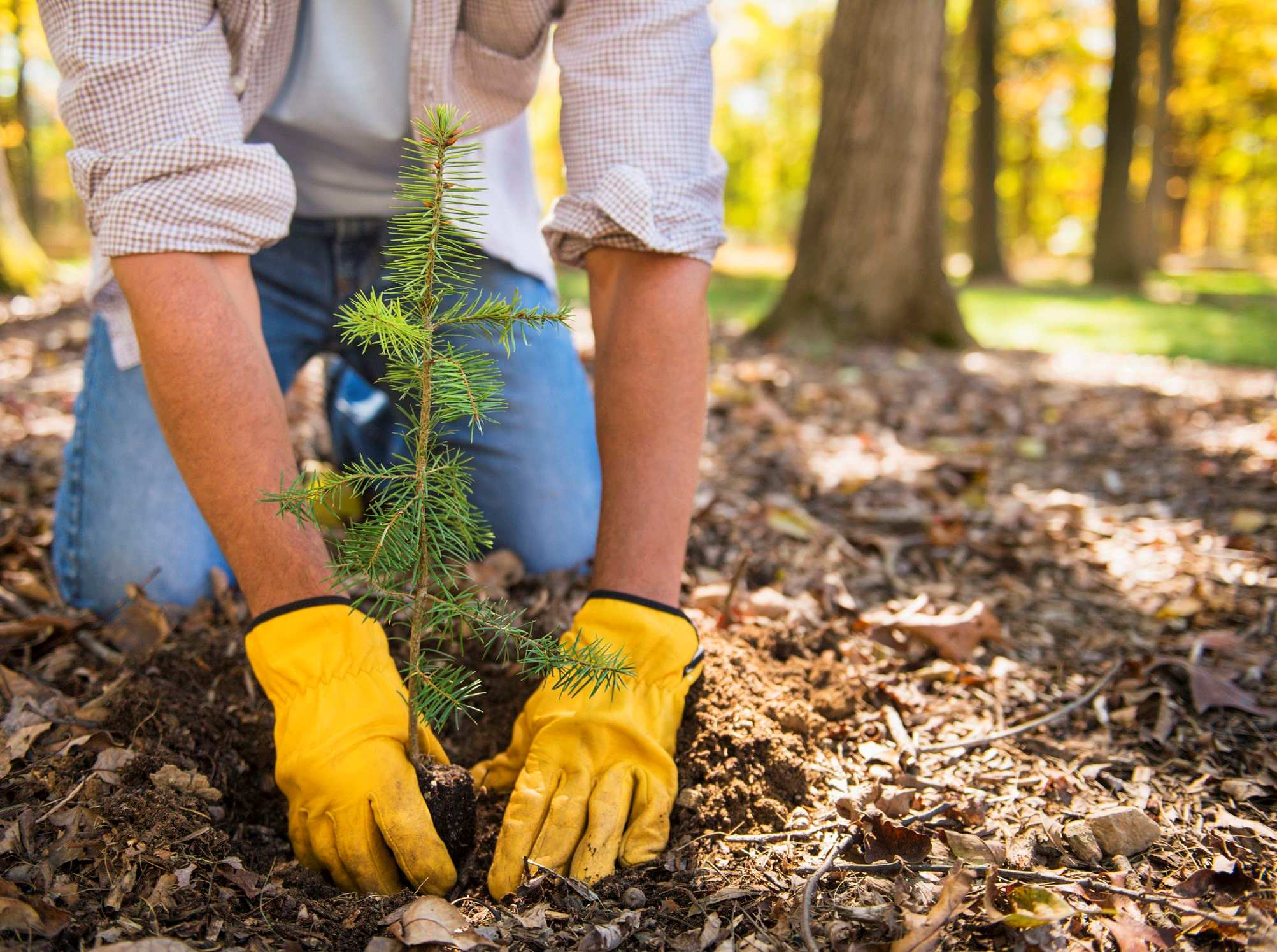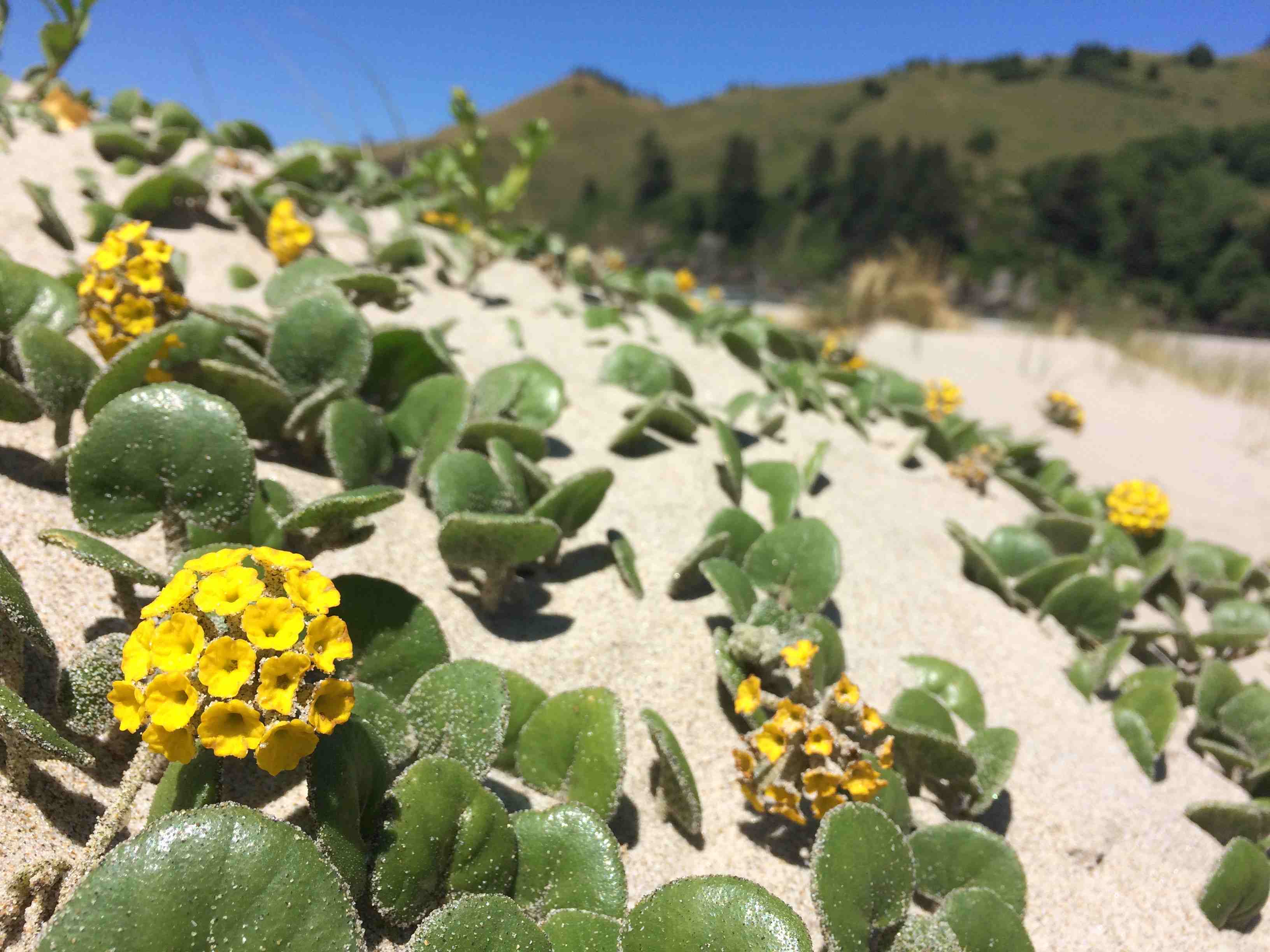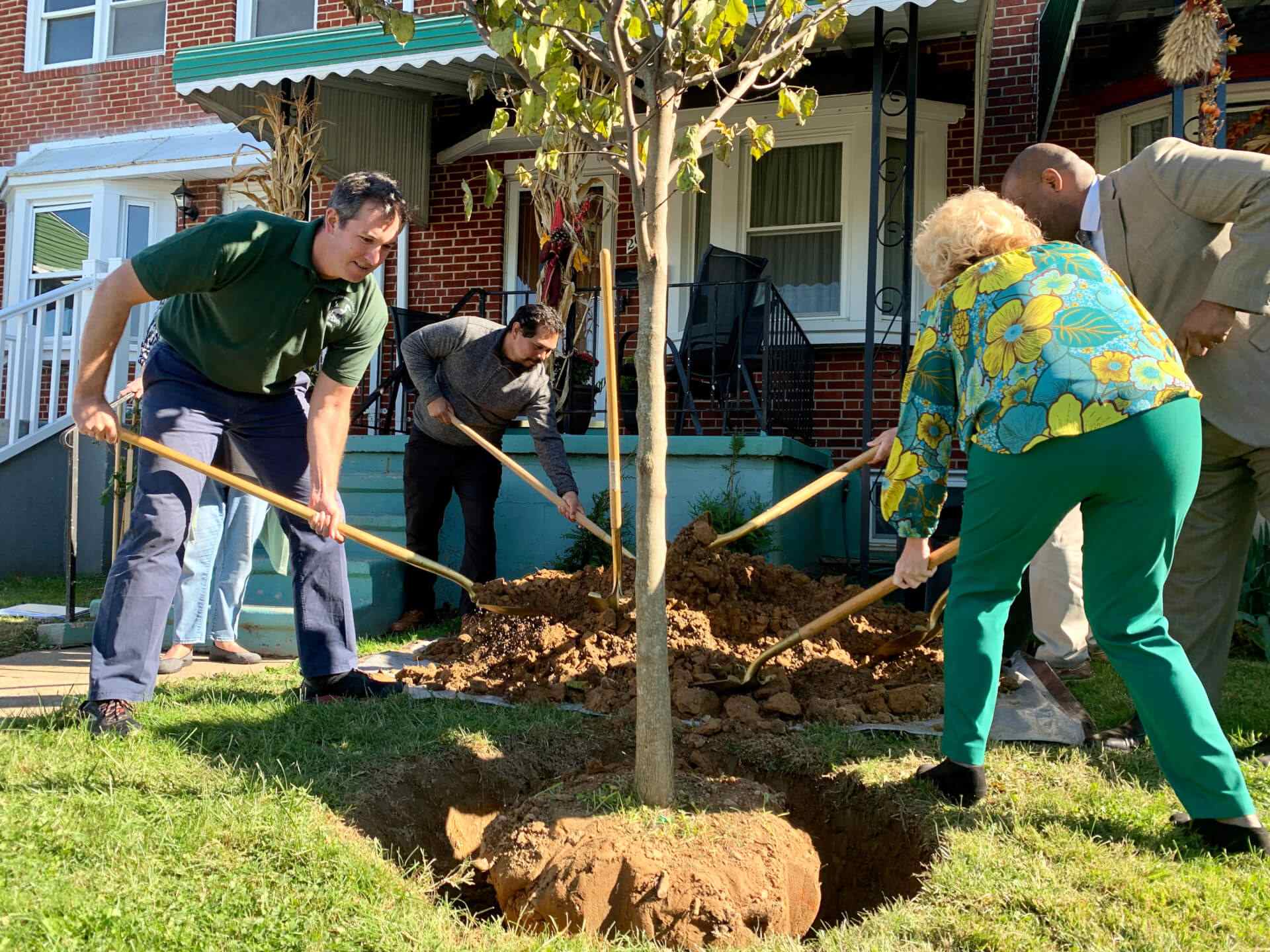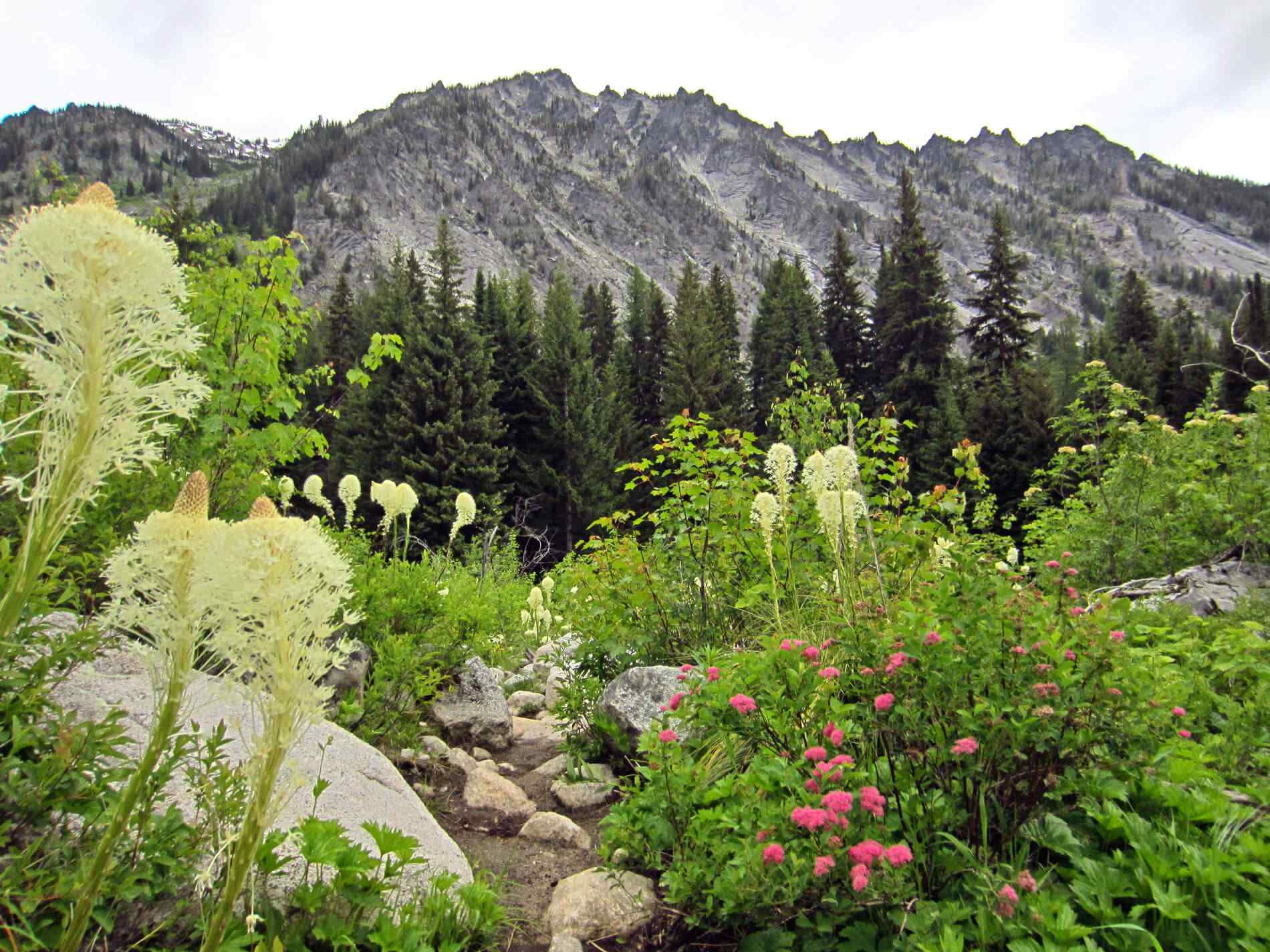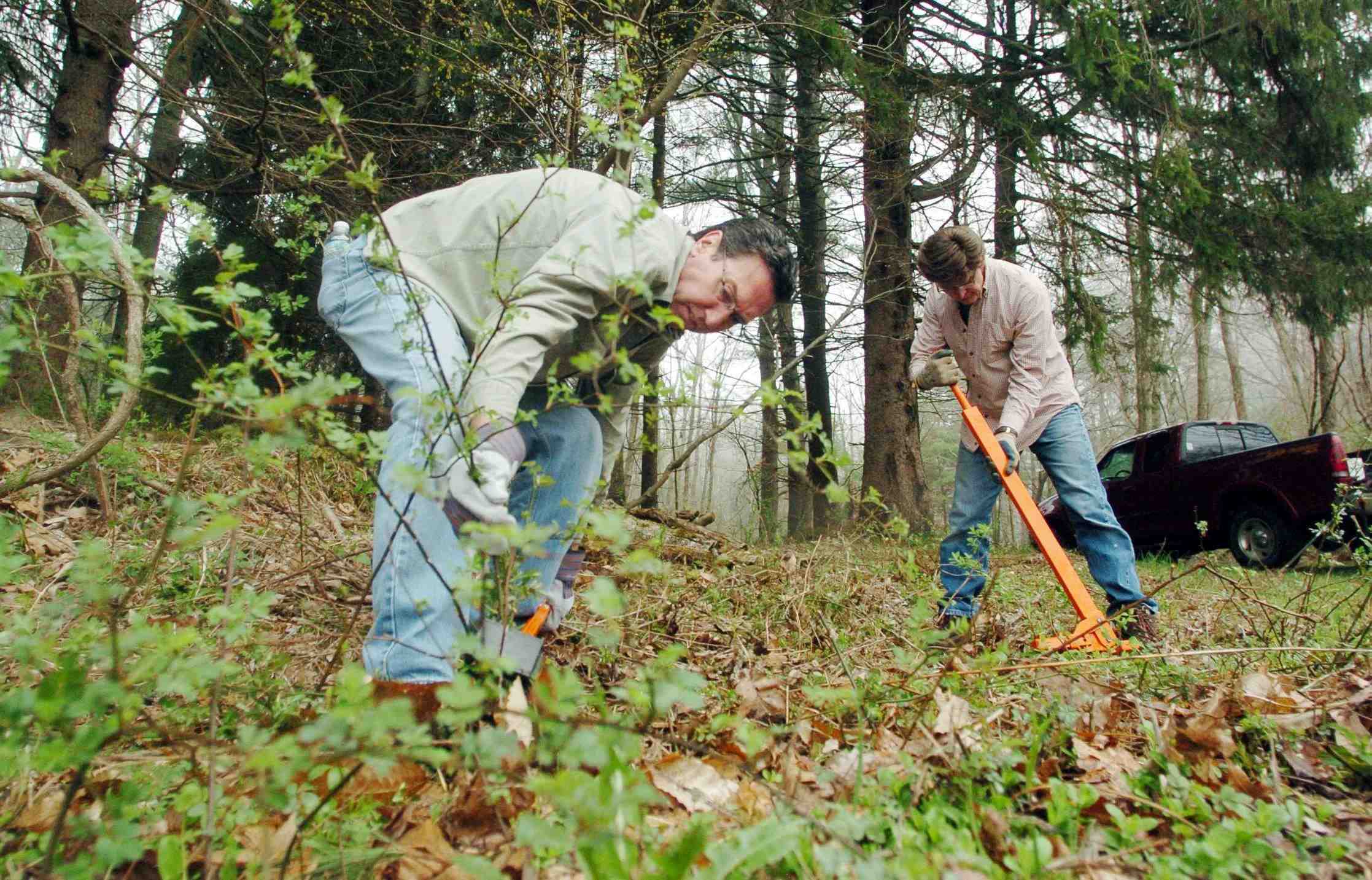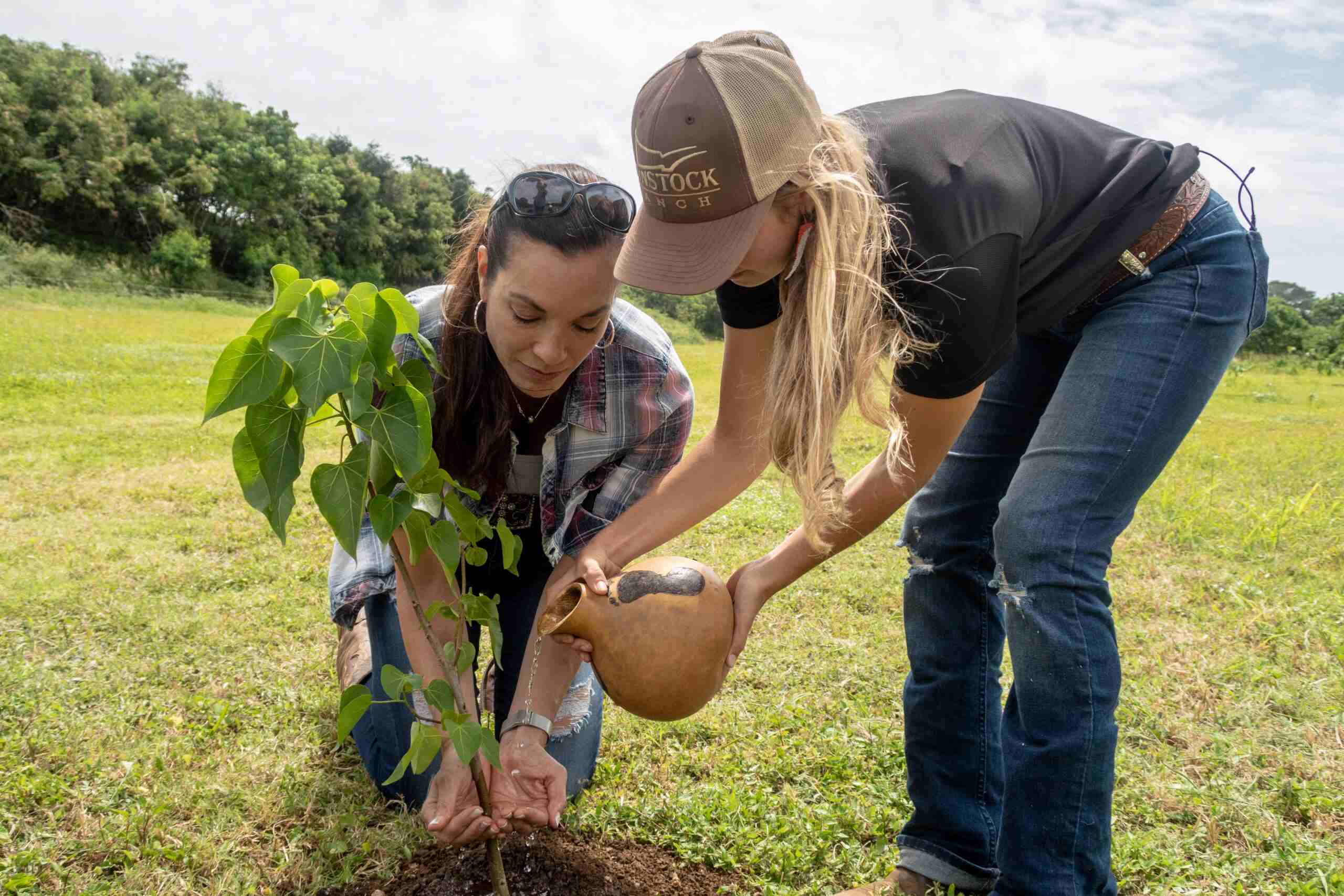Home>Gardening News and Trends>Gardening Trends>What Is No-Till Planting
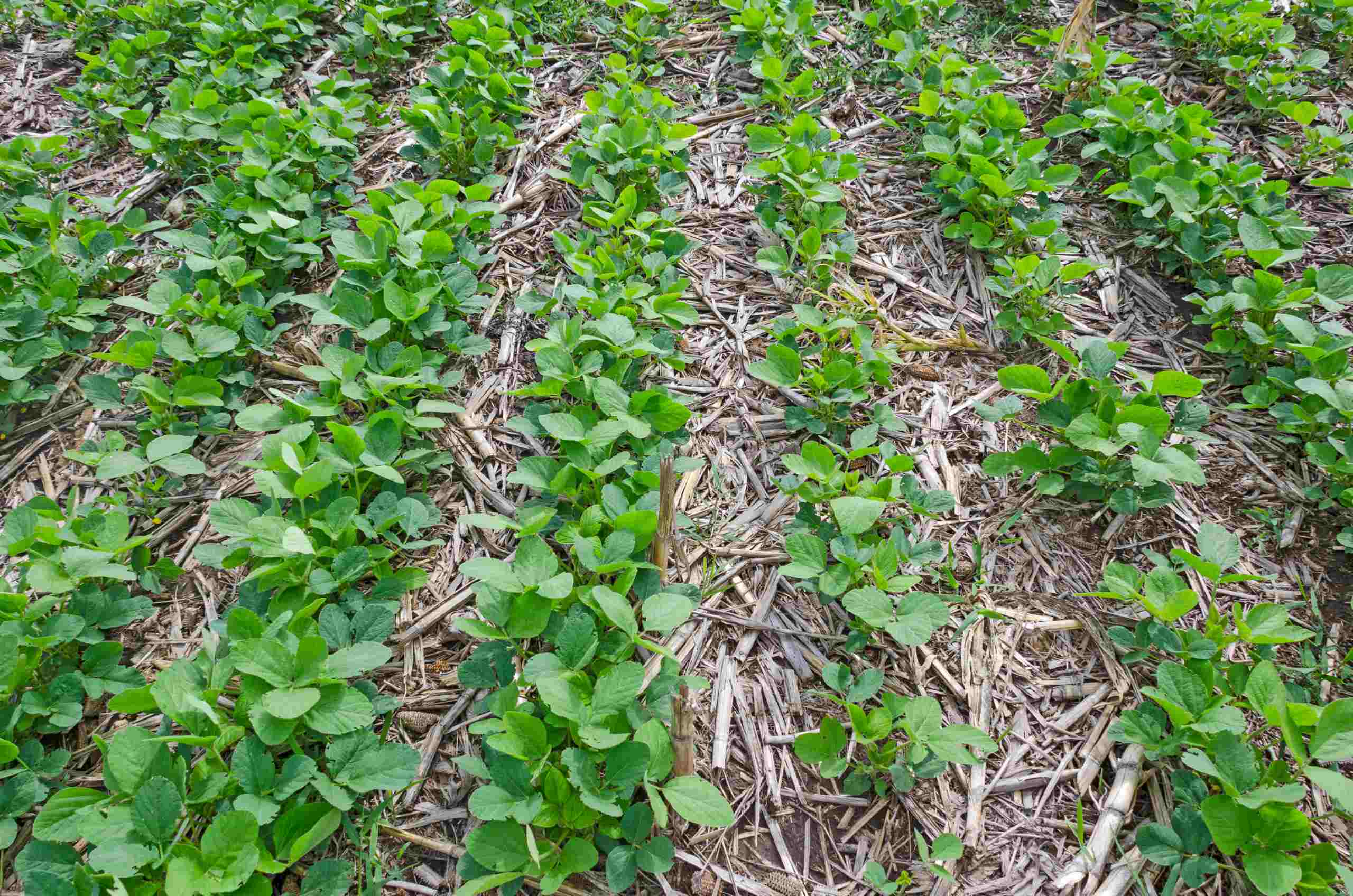

Gardening Trends
What Is No-Till Planting
Modified: January 22, 2024
Discover the latest gardening trend of No Till Planting and learn how it can revolutionize your gardening techniques. Explore the benefits and principles of this sustainable approach to gardening.
(Many of the links in this article redirect to a specific reviewed product. Your purchase of these products through affiliate links helps to generate commission for Chicagolandgardening.com, at no extra cost. Learn more)
Table of Contents
Introduction
Gardening has always been a popular and fulfilling hobby for many people. It allows us to connect with nature, grow our own food, and create beautiful outdoor spaces. Over the years, gardening techniques have evolved and adapted to meet the changing needs and demands of gardeners.
One such technique that has gained significant popularity in recent years is no till planting. No till planting is a method of gardening that involves minimal disturbance to the soil, avoiding the traditional practice of tilling or digging up the soil before planting.
By preserving the integrity of the soil structure, no till planting offers numerous benefits for both gardeners and the environment. In this article, we will explore the definition of no till planting, its benefits and challenges, as well as the techniques, equipment, and practices involved in implementing this gardening approach.
No till planting is a departure from conventional gardening practices that involve turning over and cultivating the soil before planting. Instead, it focuses on maintaining the natural structure and composition of the soil by leaving it undisturbed.
This method is especially beneficial for preserving the soil’s ecosystem and promoting healthier plant growth. By avoiding the disruption of soil structure, microorganisms and beneficial insects can thrive, contributing to a more balanced and sustainable soil ecosystem.
No till planting also helps to reduce erosion and conserve water. The undisturbed soil acts as a protective cover, preventing soil erosion caused by wind or water runoff. Additionally, the natural structure of the soil allows it to retain moisture more effectively, reducing the need for frequent watering.
Furthermore, no till planting can lead to increased organic matter in the soil. The absence of tilling allows decaying plant material to decompose naturally, enriching the soil with nutrients and improving its overall health.
However, transitioning to no till planting can present some challenges. One of the primary concerns is weed control. Without tilling, weeds may not be buried deep enough to prevent their growth. Gardeners must adopt alternative methods such as mulching, hand weeding, or using natural weed suppressants to manage weed growth.
Additionally, some gardeners may find it challenging to establish new plants in no till gardens, as the soil may be more compacted and have a different composition compared to tilled soil. However, with proper preparation and the use of appropriate planting techniques, these challenges can be overcome.
In the following sections, we will delve deeper into the techniques, equipment, and practices involved in no till planting. By understanding these aspects, gardeners can confidently implement this method and reap its numerous rewards for both their gardens and the environment.
Definition of No Till Planting
No till planting, also known as no till gardening or no dig gardening, is a method of planting and gardening that involves minimal or no soil disturbance. Unlike traditional gardening practices that involve tilling the soil by digging or turning it over, no till planting emphasizes preserving the natural structure and composition of the soil.
Instead of using a traditional tiller or shovel, gardeners implement techniques that minimize soil disruption, such as using mulch, compost, or cover crops to prepare the planting area. These methods create a favorable environment for planting while maintaining the integrity of the soil ecosystem.
The core principle behind no till planting is to promote soil health and fertility. By leaving the soil undisturbed, the natural structure of the soil is preserved, allowing the microorganisms, beneficial insects, and plant roots to thrive. This symbiotic relationship contributes to a healthy and balanced soil ecosystem, which in turn leads to increased plant productivity.
Additionally, no till planting focuses on retaining soil moisture and reducing erosion. By leaving the soil undisturbed, it acts as a protective cover, which prevents water runoff and soil erosion caused by wind or heavy rain. This is especially beneficial in areas prone to drought or heavy rainfall, as it helps to conserve water and prevent topsoil loss.
No till planting also plays a crucial role in building and maintaining soil organic matter. By avoiding the disturbance of the soil, organic matter such as leaves, grass clippings, and plant debris are allowed to decompose naturally. This decomposition process enriches the soil with essential nutrients, improves soil structure, and enhances water retention capacity.
It is important to note that no till planting does not mean completely avoiding soil disturbance. Some minimal soil disturbance may be necessary for tasks such as planting seeds or transplanting seedlings. However, these disturbances are kept to a minimum, and the overall goal is to disturb the soil as little as possible.
No till planting is a versatile gardening technique that can be implemented in various settings, including vegetable gardens, flower beds, and even large-scale agricultural operations. It offers numerous benefits for both gardeners and the environment, making it an increasingly popular approach in the world of gardening.
By embracing no till planting, gardeners can enjoy healthier soil, improved plant growth, reduced water usage, and enhanced overall garden sustainability. With proper techniques and practices, this method can be successfully adopted by gardeners of all skill levels, allowing them to create thriving gardens while minimizing their impact on the environment.
Benefits of No Till Planting
No till planting offers a wide range of benefits for both gardeners and the environment. By implementing this method, gardeners can experience improved soil health, increased plant productivity, and a more sustainable gardening practice.
One of the key benefits of no till planting is the preservation of soil structure. Traditional tilling methods can disrupt the natural arrangement of soil particles, negatively impacting the soil’s fertility and structure. No till planting, on the other hand, maintains the integrity of the soil by minimizing disturbances, allowing it to retain its natural composition and promote healthier plant growth.
By preserving the soil structure, no till planting promotes the growth and activity of beneficial microorganisms and insects. These organisms play a crucial role in breaking down organic matter, releasing nutrients into the soil, and creating a balanced ecosystem. Improved soil health translates into enhanced plant nutrient uptake, resulting in healthier, more resilient plants.
Furthermore, no till planting helps to reduce erosion and conserve water. The undisturbed soil acts as a protective cover, preventing soil erosion caused by wind or water runoff. This is especially important in areas with hilly terrain or heavy rainfall, as it helps to maintain the topsoil and prevent the loss of valuable nutrients. Additionally, the natural structure of the soil in a no till garden enables the soil to retain moisture more effectively, reducing the need for frequent watering and conserving water resources.
Another significant benefit of no till planting is the ability to increase organic matter in the soil. By avoiding tilling, organic matter such as leaves, plant debris, and cover crops can decompose naturally, enriching the soil with essential nutrients. This increase in organic matter improves soil structure, enhances water retention capacity, and promotes the growth of beneficial soil organisms.
No till planting is also an eco-friendly gardening practice. With reduced soil disturbance and better moisture retention, no till gardens require fewer inputs such as fertilizers, herbicides, and pesticides. This not only minimizes chemical runoff and pollution but also saves time, effort, and money for gardeners.
Additionally, no till planting aids in carbon sequestration and mitigating climate change. Healthy soils with increased organic matter have the capacity to store more carbon dioxide from the atmosphere. This helps to reduce greenhouse gas emissions and contribute to efforts in combating climate change.
Overall, no till planting provides numerous benefits for gardeners and the environment. It promotes soil health, conserves water, reduces erosion, enhances nutrient availability, and contributes to sustainable gardening practices. By adopting no till planting techniques, gardeners can create thriving, resilient gardens while minimizing their impact on the environment.
Challenges of No Till Planting
While no till planting offers a range of benefits, it also presents some unique challenges for gardeners. It is important to be aware of these challenges and develop strategies to overcome them for successful implementation of this gardening technique.
One of the primary challenges of no till planting is weed control. Without the traditional method of tilling, weeds may not be buried deep enough to prevent their growth. Gardeners need to adopt alternative weed control methods such as mulching, hand weeding, or using natural weed suppressants like cover crops to manage weed growth effectively.
Additionally, transitioning to no till planting may initially face difficulties in establishing new plants or seedlings. The undisturbed soil, which may be more compacted and have a different composition compared to tilled soil, can make it challenging for roots to penetrate and establish themselves. However, gardeners can improve soil structure by applying organic matter and utilizing techniques like soil aerating tools or raised beds to create a conducive environment for plant growth.
Another challenge that gardeners may encounter in no till planting is the buildup of certain pests and diseases. Without the disruption of tilling, pests and diseases may have a greater opportunity to overwinter and thrive. To address this challenge, it is important to implement strategies such as crop rotation, proper plant spacing, and regular monitoring to identify and address pest and disease issues promptly.
Furthermore, the initial conversion from traditional gardening practices to no till planting can require additional effort and time. Building up the soil’s organic matter and addressing any existing soil issues may take some time, and the benefits of no till planting may not be immediately apparent. However, with patience and consistent implementation of no till techniques, gardeners will reap the rewards over time.
Lastly, it is important to note that the success of no till planting relies on the proper selection and application of mulch and cover crops. Inadequate or improper use of mulch can lead to issues such as excessive moisture retention, weed seed contamination, or nutrient imbalance. Therefore, gardeners should choose appropriate organic mulch materials and apply them correctly to optimize the benefits of no till planting.
While these challenges may seem daunting, they can be overcome with careful planning, implementation of appropriate techniques, and ongoing monitoring. With proper weed control strategies, attention to soil health, effective pest and disease management, and the right selection of mulch and cover crops, gardeners can successfully navigate the challenges and enjoy the benefits of no till planting in their gardens.
Implementing No Till Planting Techniques
Implementing no till planting techniques requires a shift in gardening practices and the adoption of alternative methods for soil preparation and weed control. By following the right techniques, gardeners can effectively implement no till planting and reap its numerous benefits.
The first step in implementing no till planting is to assess the existing gardening space. Clear the area of any weeds or debris, ensuring a clean and weed-free starting point. If the soil is compacted, aerate it using tools like a broadfork or garden fork to improve soil structure and promote better root penetration.
Next, instead of tilling, focus on building soil health and increasing organic matter. Apply a layer of compost or well-rotted manure over the planting area, and incorporate it into the top few inches of the soil using a garden fork or a hand-held cultivator. This will provide a nutrient-rich, loose layer for plants to grow in.
Utilize the power of mulch to suppress weeds and retain moisture in the soil. Apply a layer of organic mulch, such as straw, wood chips, or shredded leaves, around the base of plants and in between rows. This will help to smother weed growth, conserve soil moisture, and regulate soil temperature.
Implementing cover crops is another important aspect of no till planting. Plant cover crops like clover, vetch, or rye during fallow periods or between growing seasons. These crops help to protect the soil from erosion, reduce weed growth, and improve soil structure. You can either mow and leave the cover crops on the surface or chop them up and use them as green mulch.
Hand weeding is often necessary in a no till garden to manage any weeds that do appear. Regularly inspect the garden and remove weeds by hand, taking care to pull them out by the roots to prevent regrowth. This will help to keep weeds under control and minimize competition for nutrients and space.
Furthermore, rotational planting is crucial in a no till garden to prevent the buildup of pests and diseases. Avoid planting the same crop in the same area year after year. Instead, practice crop rotation by switching plant families or utilizing companion planting techniques to deter pests and promote a healthy garden ecosystem.
Lastly, it is essential to continually monitor the garden for any signs of nutrient deficiencies, pests, or diseases. Regularly check plants for any changes in growth, discoloration, or signs of pest infestation. Address issues promptly to prevent them from spreading and impacting the overall garden health.
Implementing no till planting techniques may require some adjustment and experimentation, but with careful planning and dedication, gardeners can create a thriving garden ecosystem while preserving the health of the soil.
Equipment Used in No Till Planting
No till planting requires specific equipment to effectively implement this gardening technique and maintain the health of the soil. While the equipment needed for no till gardening can vary depending on the scale and complexity of the garden, there are some essential tools that can aid in the successful implementation of this method.
1. Garden Fork or Broadfork: These tools are used for aerating the soil, breaking up compacted layers, and improving soil structure. They are ideal for no till planting as they minimize soil disturbance while creating channels for air, water, and plant roots.
2. Mulching Tools: Various tools can be used to apply and spread organic mulches in the garden. These include rakes, pitchforks, or even a mulch spreader, which can help evenly distribute mulch over large areas quickly and efficiently.
3. Hand Cultivator: A hand cultivator or hand hoe can be used to gently loosen the soil around plants or in planting rows without disturbing the overall soil structure. It helps to control weeds and cultivate the soil shallowly, facilitating the easy incorporation of compost or organic matter.
4. Garden Trowel: A garden trowel is a versatile tool for planting seedlings, transplanting small plants, or creating planting holes for seeds. It allows for precise planting while minimizing soil disturbance.
5. Sprinkler or Drip Irrigation System: Proper watering is essential for the success of no till gardens. A sprinkler or drip irrigation system can be used to deliver water directly to the plant roots, minimizing water loss and maintaining soil moisture levels.
6. Soil Testing Kit: Regular soil testing is important in no till planting to assess the nutrient levels, pH balance, and overall soil health. A soil testing kit can help determine any deficiencies or imbalances in the soil, allowing gardeners to make necessary amendments to support plant growth.
7. Weed Control Tools: No till gardens require effective weed control methods. Hand tools such as garden hoes, hand weeders, or weed pullers can be used to remove weeds without disturbing the soil or plant roots. Alternatively, using a mulch layer or applying natural weed suppressants can help prevent weed growth.
8. Garden Gloves: It is always important to protect your hands while working in the garden. A good pair of garden gloves will provide comfort and protection from thorns, prickly plants, or any sharp objects.
Remember to choose tools that are well-suited for your garden size and personal preference. Invest in high-quality, durable equipment that will last for multiple seasons and provide comfort and ease of use. The right combination of tools will help to maintain the integrity of the soil while ensuring successful no till planting.
Successful No Till Planting Practices
Implementing successful no till planting practices involves a combination of techniques, strategies, and attention to detail. By following these practices, gardeners can maximize the benefits of no till planting and create thriving, sustainable gardens.
1. Soil Preparation: Before planting, prepare the soil by removing any existing weeds or debris. Use a garden fork or broadfork to aerate the soil and improve its structure. Incorporate compost or well-rotted manure into the top few inches of the soil to enhance its nutrient content and fertility.
2. Mulching: Apply a layer of organic mulch, such as straw, wood chips, or shredded leaves, around the base of plants and in between rows. This helps to suppress weed growth, retain soil moisture, regulate soil temperature, and improve overall soil health.
3. Cover Cropping: Integrate cover crops into your garden rotation plan. Plant cover crops like clover, vetch, or rye during fallow periods or between growing seasons. Cover crops protect the soil from erosion, add organic matter, and improve soil structure.
4. Crop Rotation: Practice crop rotation to prevent the buildup of pests and diseases. Avoid planting the same crop in the same area year after year. Instead, switch plant families to disrupt pest cycles and maintain a healthy garden ecosystem.
5. Selecting Suitable Plants: Choose plants that are well-suited to the growing conditions of your garden. Select varieties that are disease-resistant and require minimal inputs. This reduces the need for pesticides or fertilizers and promotes a more sustainable gardening approach.
6. Regular Monitoring: Regularly inspect your garden for signs of pests, diseases, or nutrient deficiencies. Monitor plant growth, check for any changes in appearance, and address issues promptly to prevent them from spreading. Early detection and intervention are crucial for maintaining garden health.
7. Watering: Water your plants deeply and infrequently to encourage deep root growth. Use methods such as drip irrigation or soaker hoses to deliver water directly to the plant roots while minimizing water loss through evaporation. Monitor soil moisture levels and adjust watering accordingly to avoid over or under-watering.
8. Continuous Weed Control: Implement effective weed control methods to minimize weed competition. Use mulch to suppress weed growth and hand weed regularly to remove any weeds that do appear. Be diligent in removing weeds by hand, taking care to remove them by the roots.
9. Soil Testing and Amendments: Regularly test the soil to assess nutrient levels and pH balance. Based on the results, apply appropriate organic amendments, such as compost, to replenish nutrient levels and maintain optimal soil conditions.
10. Patience and Observation: No till planting may require some time for the soil and plants to adapt and thrive. Be patient and observe the changes and improvements in your garden over time. Take note of what works and what doesn’t, and make adjustments accordingly.
By following these successful no till planting practices, gardeners can create sustainable and productive gardens while preserving the health and fertility of the soil. Remember to stay attentive, adapt to the unique needs of your garden, and enjoy the rewards of a thriving and environmentally friendly gardening approach.
Conclusion
No till planting is a transformative gardening approach that offers numerous benefits for both gardeners and the environment. By minimizing soil disturbance, preserving soil structure, and promoting a balanced soil ecosystem, no till planting leads to improved soil health, increased plant productivity, and reduced environmental impact.
Throughout this article, we have explored the definition of no till planting and its key principles. We have discussed the benefits of this gardening technique, including enhanced soil health, water conservation, reduced erosion, increased organic matter, and sustainable practices. We have also addressed challenges commonly encountered in no till planting, such as weed control and establishing plant growth.
Furthermore, we have outlined important practices for successfully implementing no till planting, including soil preparation, mulching, cover cropping, crop rotation, and regular monitoring. These practices ensure the health and productivity of the garden while minimizing the use of chemicals and external inputs.
No till planting requires a shift in gardening mindset and practices, but the effort is well worth the reward. As gardeners embrace this method and adopt techniques tailored to their specific needs, they can create thriving, sustainable gardens that support the health of both plants and the environment.
It is crucial to remember that successful no till planting takes time, patience, and a willingness to adapt. Gardeners may encounter challenges along the way, such as weed management or establishing new plants, but with determination and proper techniques, these challenges can be overcome.
By implementing no till planting, gardeners can contribute to the conservation of soil health, reduction in water usage, and mitigation of environmental issues. This approach helps to build resilient gardens that are more self-sustaining, reduce reliance on synthetic inputs, and contribute positively to the broader ecosystem.
In conclusion, no till planting is a powerful and sustainable gardening technique that promotes soil health, conserves resources, and enhances overall garden productivity. By embracing this method, gardeners can not only create beautiful and productive spaces but also make a positive impact on the environment and future generations to come.
